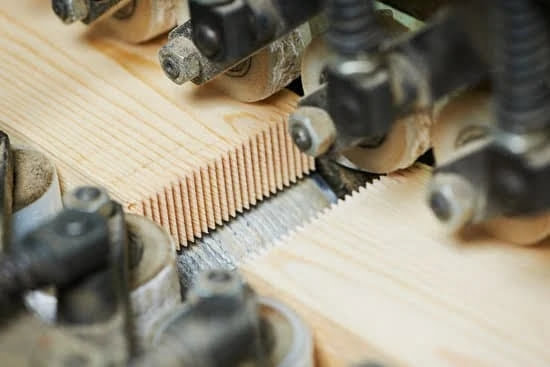A woodworking bench vise is an essential tool for any woodworker, providing a sturdy and secure grip for a wide range of woodworking tasks. In this article, we will explore the ins and outs of using a woodworking bench vise, covering everything from the different types available to maintenance tips and advanced techniques. Whether you’re a seasoned woodworker or just starting out, understanding how to use a woodworking bench vise can greatly enhance your crafting experience.
Woodworking bench vises have been an integral part of woodworking for centuries, evolving from simple wooden screws to heavy-duty metal models. They are designed to hold wood pieces firmly in place, allowing for precise cutting, shaping, and assembling of projects. Understanding the history and importance of these tools can provide valuable insight into their role in traditional craftsmanship as well as modern woodworking practices.
In the following sections, we will delve into the various types of woodworking bench vises available on the market today and discuss the specific uses and advantages of each type. Additionally, we will provide tips for selecting the right bench vise for your needs and guide you through the process of installing it onto your workbench. With this comprehensive overview, you’ll be well-equipped to utilize this indispensable tool effectively in your woodworking endeavors.
Types of Woodworking Bench Vises
When it comes to woodworking bench vises, there are several types available, each with its own unique features and advantages. The most common types include the front vise, tail vise, shoulder vise, leg vise, and woodworker’s vice.
The front vise is perhaps the most popular type of bench vise and is typically mounted on the front of a workbench. It is used for holding boards and other workpieces in place while you work on them. The tail vise, on the other hand, is installed at the end of a workbench and is ideal for securing long pieces of wood for tasks such as planing or jointing.
Another important type is the shoulder vise, which is designed specifically for working on the edges of boards. This type of vise allows you to hold your workpiece vertically so that you can easily work on its edge. Additionally, woodworker’s vice is a versatile option that can be attached to different surfaces.
Each type of bench vise has its own specific uses and advantages. Understanding these differences will help you choose the right one for your specific woodworking needs.
| Types of Woodworking Bench Vises | Specific Uses |
|---|---|
| Front Vise | Holding boards and workpieces in place |
| Tail Vise | Securing long pieces of wood for planing or jointing |
| Shoulder Vist | Working on the edges of boards by holding them vertically |
It’s vital to consider your typical woodworking projects when choosing a bench vise so that you can select one that best suits your needs. The size of your workspace as well as your budget are also important factors to take into account as these will determine which type of bench vise would be most suitable for you.
Keep in mind that different types may have varying mechanisms or functionality so having a clear understanding will make it much easier to select one that meets your requirements.
Before making a decision about which one to purchase or use in any given project, research what various manufacturers offer based off specifics like material type (cast iron vs forged steel) because quality materials can affect durability and longevity. These factors should heavily influence user practicality over periods spent woodworking based on recurrence percentage per item in annual projects.
Choosing the Right Woodworking Bench Vise
When it comes to choosing the right woodworking bench vise for your needs, there are several factors to consider. The type of work you do, the size of your projects, and your budget all play a role in determining which bench vise is best for you. It’s important to understand the different types of bench vises available and their specific uses and advantages.
One of the most common types of bench vises is the front vise, which is typically mounted at the front of a workbench. This type of vise is often used for holding larger pieces of wood or for tasks that require significant clamping force. Another popular option is the shoulder vise, which is designed for clamping along the side of a workbench and is particularly useful for joinery work.
It’s also essential to pay attention to features such as jaw width and opening capacity when selecting a bench vise. For larger projects, a wider jaw width and greater opening capacity will be beneficial. Additionally, consider whether you need a quick-release mechanism for rapid adjustment or if a traditional screw-operated vise will suffice.
Ultimately, the right woodworking bench vise for you will depend on your specific needs and preferences. Take into account the type of woodworking projects you typically undertake and carefully evaluate the features and capabilities of different bench vises before making a decision.
| Types of Woodworking Bench Vises | Details |
|---|---|
| Front Vise | Mounted at the front of a workbench; used for holding larger pieces of wood or tasks requiring significant clamping force. |
| Shoulder Vise | Designed for clamping along the side of a workbench; particularly useful for joinery work. |
| Jaw Width & Opening Capacity | Consider wider jaw width and greater opening capacity for larger projects; evaluate need for quick-release mechanism vs. traditional screw-operated vise. |
Installing a Woodworking Bench Vise
When it comes to woodworking, having a reliable bench vise is essential. A bench vise is a mechanical device used to securely hold a workpiece in place while performing various woodworking tasks such as sawing, drilling, and sanding. Installing a bench vise onto your workbench is a straightforward process that can greatly enhance the functionality of your workspace.
Step-by-Step Guide
The first step in installing a woodworking bench vise is to determine the appropriate location on your workbench. You will want to select a spot that provides ample space for your projects and allows for easy access to the vise handle. Once you have chosen the ideal location, mark and drill holes for the mounting bolts.
Next, position the bench vise over the drilled holes and attach it securely using bolts and washers. It’s important to ensure that the vise is firmly anchored to the workbench and does not wobble or move during use. Tighten the bolts with a wrench or socket set until the vise is securely fastened in place.
Safety Precautions
When installing a woodworking bench vise, it’s crucial to prioritize safety. Be sure to wear appropriate safety gear such as gloves and safety glasses when working with tools and hardware. Additionally, take care to avoid over-tightening mounting bolts, as this can potentially damage both the workbench and the vise.
Lastly, before using your newly installed bench vise, give it a thorough inspection to ensure that everything is properly secured and aligned. Test the functionality of the vise by clamping various sizes of wood pieces to ensure that it operates smoothly and securely.
Now that you have successfully installed your woodworking bench vise, you are ready to take on a wide range of woodworking projects with confidence, knowing that you have a reliable clamping system at your disposal. Whether you are shaping intricate details or simply need an extra pair of hands while working on larger pieces, your bench vise will prove invaluable in enhancing precision and efficiency in your woodworking endeavors.
How to Use a Woodworking Bench Vise
A woodworking bench vise is an essential tool for any woodworker, allowing for secure clamping of wood pieces during various woodworking tasks. Whether you are sawing, sanding, or drilling, a bench vise can provide the stability needed to work with precision and safety. In this section, we will explore the different techniques for using a woodworking bench vise effectively and maximizing its potential in your woodworking projects.
Securing Wood Pieces
One of the primary functions of a bench vise is to securely hold wood pieces in place while you work on them. To do this, begin by opening the jaws of the vise to accommodate the size of the piece you are working on. Place the wood piece between the jaws and then tighten the vise’s handle to secure it in place. Take care not to over-tighten, as this could damage the wood or strain the vise.
Clamping Irregular-Shaped Objects
In addition to securing regular-shaped wood pieces, a bench vise can also be used to clamp irregular-shaped objects such as round or tapered pieces. This can be achieved by using wooden blocks or custom-made jigs to provide a stable grip on these types of objects. By employing creative solutions, you can maximize the utility of your bench vise and expand its versatility in various woodworking tasks.
Versatility in Woodworking Projects
From holding pieces for precise cuts to providing a stable surface for chiseling or carving, a woodworking bench vise is an indispensable tool that adds efficiency and accuracy to your projects. Whether you are a beginner or an experienced woodworker, understanding how to use a bench vise effectively can significantly enhance your woodworking experience and improve the quality of your finished products.
Maintenance and Care of a Woodworking Bench Vise
Woodworking bench vises are an essential tool for anyone working with wood. They are designed to securely hold wood in place while you work on it, making tasks such as sawing, planing, and drilling much easier and safer. Bench vises have been a staple in woodworking for centuries, dating back to ancient civilizations where wooden screws were used to create clamping mechanisms.
When it comes to types of woodworking bench vises, there are several options to choose from. The most common types include the front vise, tail vise, leg vise, and shoulder vise. Each type has its own unique advantages and uses, so it’s important to consider your specific needs before making a purchase.
Choosing the right woodworking bench vise for your needs is crucial. Factors such as the size of your workbench, the type of woodworking projects you typically work on, and your budget all come into play when selecting a bench vise. It’s important to carefully evaluate these factors in order to make an informed decision.
Now let’s talk about how to use a woodworking bench vise. Once you’ve chosen and installed the right vise for your workshop, it’s essential to understand how to properly utilize it in your woodworking projects. Whether you’re securing a small piece of wood for precision carving or clamping down a larger piece for heavy-duty sawing or planning, knowing the correct techniques will ensure that your workpiece remains stable and secure throughout the entire process.
Advanced Techniques With a Woodworking Bench Vise
Woodworking bench vises are not just for basic clamping tasks; they can also be used in advanced techniques to enhance your woodworking projects. Here are some innovative ways to utilize a bench vise in complex woodworking tasks:
1. Holding Nontraditional Materials: Bench vises can be used to hold nontraditional materials such as metal, plastic, or even delicate materials like glass or ceramics. By carefully and securely clamping these materials in the vise, you can work on them with precision and stability.
2. Joinery Work: Woodworking bench vises can assist in joinery work such as cutting dovetails, tenons, and mortises. The vise provides a sturdy grip on the wood piece, allowing you to make precise cuts and joints without the risk of movement or slippage.
3. Carving and Shaping: Utilize the bench vise to secure irregularly shaped wood pieces for carving and shaping. Whether it’s creating intricate designs or smoothing rough edges, the vise can provide the necessary hold while freeing up your hands to work on the finer details.
4. Assembly Aid: When assembling large or complex woodworking pieces, a bench vise can act as an extra pair of hands by holding components together during glue-ups or joining processes. This ensures that everything stays aligned and in place while the adhesive sets.
5. Sanding Support: Secure smaller wood pieces in the bench vise to facilitate sanding operations. This allows for easier access to all sides of the piece and ensures consistent sanding across the entire surface.
By exploring these advanced techniques with a woodworking bench vise, you can expand your capabilities as a woodworker and achieve more intricate and refined results in your projects. Whether it’s holding nontraditional materials, aiding in joinery work, assisting with carving and shaping, supporting assembly processes, or facilitating sanding operations, the versatility of a bench vise extends far beyond traditional clamping duties.
Conclusion
In conclusion, mastering the use of a woodworking bench vise is an essential skill for any woodworker. Whether you are a beginner or an experienced craftsman, understanding how to use a bench vise effectively can greatly enhance the quality and efficiency of your woodworking projects. From securing pieces for precise cutting and drilling to holding items in place for intricate detailing work, the bench vise is a valuable tool that can make a significant difference in your workshop.
By following the tips provided in this article and taking into account the different types of bench vises available, as well as how to choose and install them, you can ensure that you have the right tool for your specific needs. Additionally, learning about maintenance and care will help keep your bench vise in excellent working condition for years to come.
Ultimately, embracing the versatility and possibilities of a woodworking bench vise can open up new creative avenues in your woodworking endeavors. Through innovative techniques and applications beyond traditional clamping, you can discover new ways to use this indispensable tool. So, take the time to explore and experiment with your bench vise – you may be surprised at what you can achieve.
Frequently Asked Questions
How Do You Use a Bench Vise Step by Step?
Using a bench vise is fairly straightforward. The first step is to select the appropriate location on the workbench and secure the vise in place. Then, you can open the jaws of the vise and place the object you want to hold firmly between them.
Once positioned, tighten the handle of the bench vise to secure the object in place. After completing your work, release the handle and remove the object from the vise.
How Does a Woodworking Vise Work?
A woodworking vise works by providing a way to securely hold wood or other materials in place while being worked on. It typically consists of two jaws – one fixed and one movable – that can be tightened together by turning a handle.
This clamping action ensures that the wood remains stable and stationary, allowing for precise cutting, shaping, or other woodworking tasks.
Where Do You Mount a Woodworking Vise?
When mounting a woodworking vise, it is important to choose a location on your workbench that provides both stability and accessibility. Many woodworkers prefer to mount their vises toward one end of the bench to allow for longer pieces of wood to be secured without issue.
Additionally, ensuring that the vise is mounted at an appropriate height for comfortable use is essential for efficient woodworking operations.

Hi everyone! I’m a woodworker and blogger, and this is my woodworking blog. In my blog, I share tips and tricks for woodworkers of all skill levels, as well as project ideas that you can try yourself.





